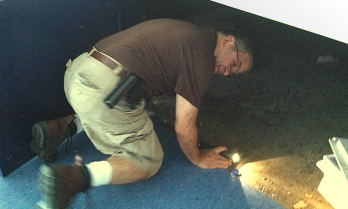|
|
 |
|
|
|
|
|
|
|
SEASONAL PESTSMAKING YOUR HOME OR BUSINESS LESS ATTRACTIVE TO PESTSWhy this winter will stimulate pest problemsThe recent winter has been one of the stormiest on record in New England with record snow falls. The moisture from snow, melting snow, and rain can get into cracks and crevices in your home or business and create places for pests to nest – or where you might already have pests, stimulate reproduction and growth. Most pests need moisture to survive and if it enters your home, so will the pests. Prevention: Inspection and Repair of your home or commercial buildingMost pest will gain access to your home through small, often barely visible, openings in the homes exterior. You should do a seasonal check of your home, particularly in the Spring, to detect these openings. It’s advised that you follow the following recommendations to repair or avoid problems:
By following these simple steps on a periodic basis, you can avoid many pest problems. Of course, if you find pests as part of your inspection, contact us. We can stop small problems before they become large ones – or take care or the large ones you didn’t detect early enough.
TIMELESS PEST: ANTS, ANTS, AND MORE ANTSAnt CharacteristicsAnts are considered the most common pest in the USA. Sooner or later, every home and business owner will need to deal with ants. Moist conditions (see above) create ideal conditions for ants to nest. There are many different species of ants. Ants have been around for 110 million years and there are believed to be over 12,000 different species. They inhabit every continent except Antarctica. About 25 species are known to infect homes and commercial businesses in the USA. Ants live in social colonies, with large colonies that literally contain millions of individuals. Colonies in your house or yard often consist of thousands of members. Nearly all ant colonies have a queen accompanied by a large force of workers. Ants are known to eat many different types of food with sweets being a favorite. Identifying Ants, Termites, and Treatment
|
|||||||||||||||||||||||||||||||||||||||||||||||||||||||||||||||||||||||||||
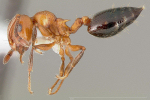 |
Acrobat Ant Light Brown to Black 1/16 – 1/8” |
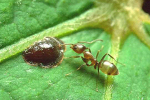 |
Argentine Ant Dark brown to black; shiny 1/16" - 1/4" |
||
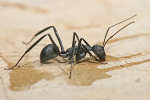 |
Carpenter Ant Black 1/4 to 1" |
 |
Crazy Ants Dark brown to black with gray sheen 1/16 – 1/8” |
||
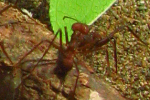 |
Leafcutter Ant Rust brown to dull dark brown 1/16”-1/2” |
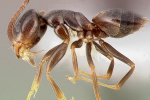 |
Odorous House Ant Brown or black Legs 1/16" - 1/8"
|
||
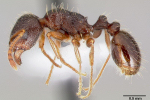 |
Pavement Ant Dark brown to blackish 1/8" to 3/16"
|
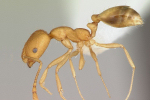 |
Pharaoh Ant Usually pale, varying from yellowish to reddish with abdomen often darker to black 1/16” to 3/32" (more info)
|
||
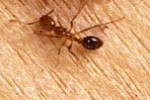 |
Red imported fire ant Dark reddish brown 1/8-3/8
|
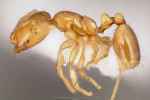 |
Thief Ants Pale yellowish to light or dark brown 1/16" to 3/32"
|
||
|
Above individual ant species photos courtesy of Wikimedia Commons |
|||||


